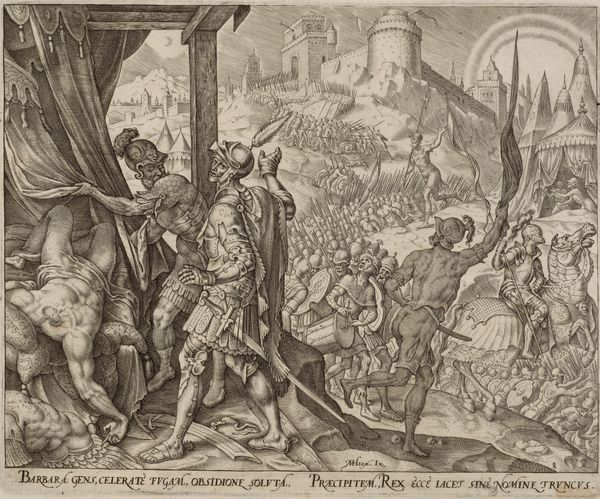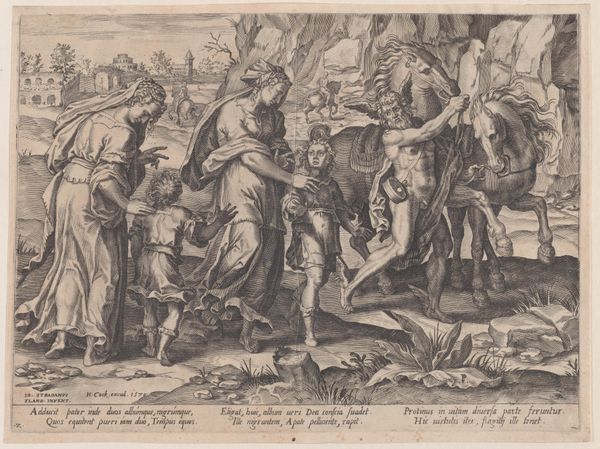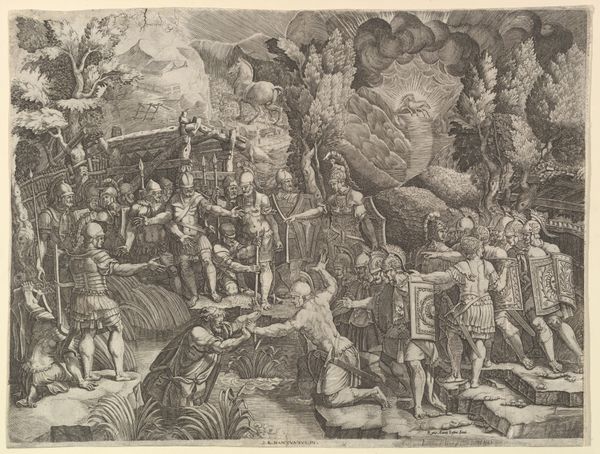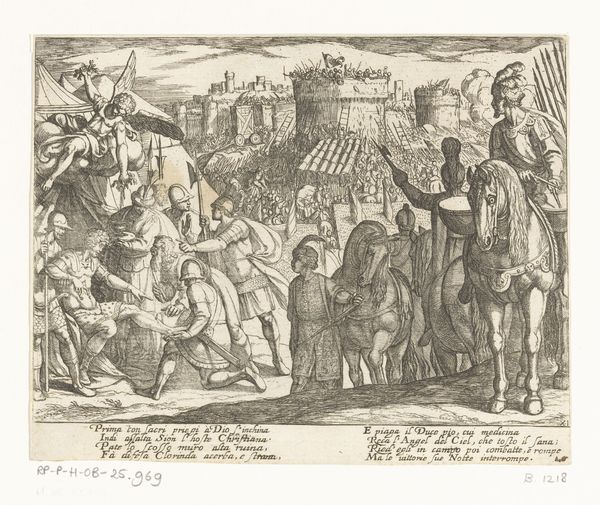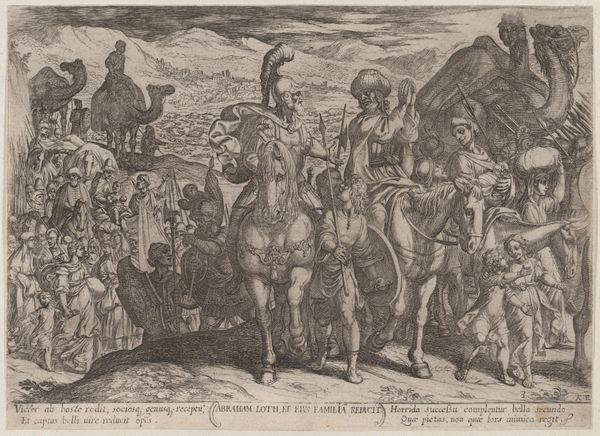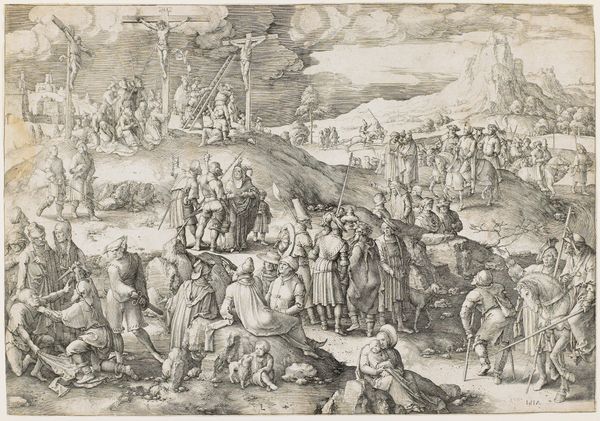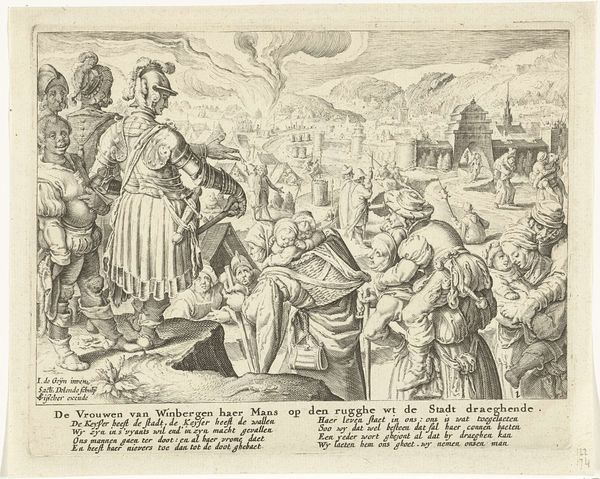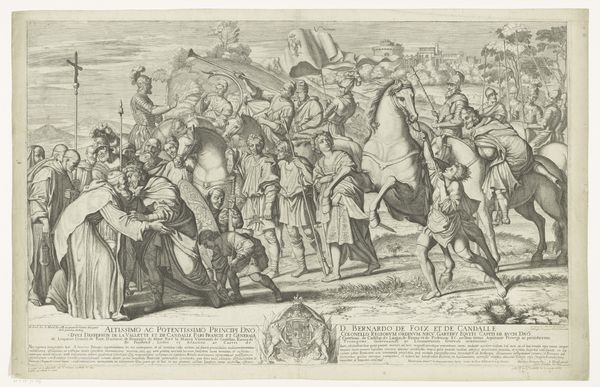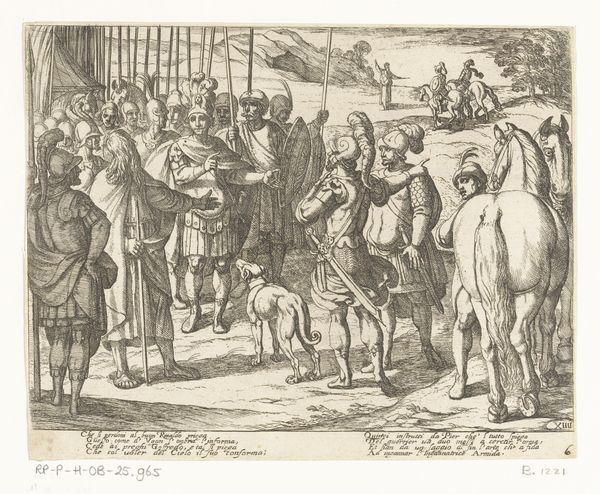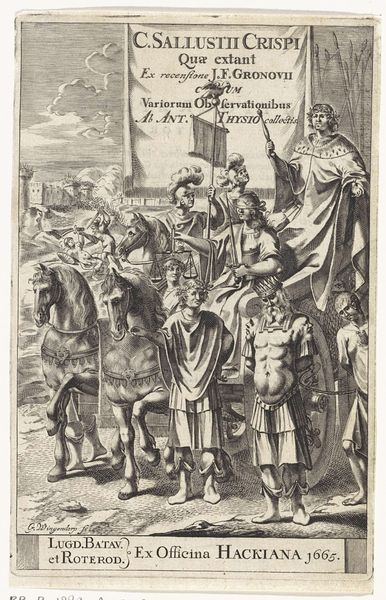
Keizer en gerenaal gevolgd door een leger bij een tuin 1599 - 1662
0:00
0:00
print, engraving
#
baroque
#
pen drawing
# print
#
landscape
#
figuration
#
line
#
cityscape
#
history-painting
#
engraving
#
pencil art
Dimensions: height 272 mm, width 368 mm
Copyright: Rijks Museum: Open Domain
Curator: Let’s take a look at this engraving called “Keizer en gerenaal gevolgd door een leger bij een tuin,” which roughly translates to "Emperor and General Followed by an Army Near a Garden." The piece is attributed to Johann Friedrich Greuter and dates somewhere between 1599 and 1662. Editor: The first thing that strikes me is the almost dizzying level of detail—so many figures meticulously rendered in stark monochrome. It creates a rather grandiose effect, doesn't it? Curator: Absolutely. It’s worth noting that images like this one weren't just about artistic expression. They served a vital function in disseminating political ideas and celebrating powerful leaders. Consider the context: printmaking enabled the broad circulation of propaganda. Editor: I agree; however, I can’t help but observe the stark linear quality dominating the piece. Note the parallel strokes of the lines generating form, shadow and texture. Curator: Indeed. The very deliberate composition guides our eye from the garden, and classical fountain in the foreground—hinting at cultivated order and prosperity— towards the regal figures and the amassed army which occupy center stage, all under the watchful gaze of the fortress, or city walls behind. It's carefully staged to showcase imperial power and authority. Editor: Though, let us also consider the lettering at the base; POMIS SVA NOMINA SERVANT. Could this allude to symbolic representations embedded in the imagery, suggesting deeper layers of meaning intended for informed or literate audiences? Curator: It does appear so. And of course, you can think about the choices in that landscape beyond, its depiction not purely for aesthetics but perhaps alluding to some kind of territorial claim, which must have resonated powerfully with viewers at that time. It places military campaigns into a historical lineage. Editor: Quite. Though the print is very compelling on visual level, the density in the composition has a peculiar flattened-perspective appearance which does reduce some dramatic tension despite the overt depiction of military pageantry. Curator: Well, whether it succeeds aesthetically for all viewers across centuries, its cultural value remains undeniable. Thanks for offering that alternate viewpoint on our history, and allowing it all to come to life. Editor: Likewise, exploring art’s intersection with society and politics has been insightful!
Comments
No comments
Be the first to comment and join the conversation on the ultimate creative platform.

